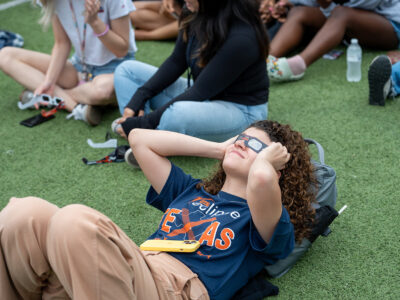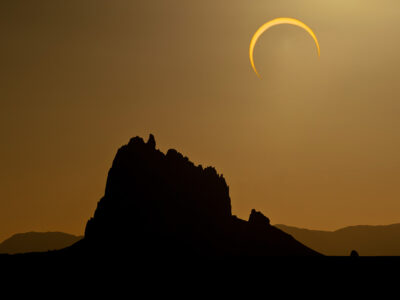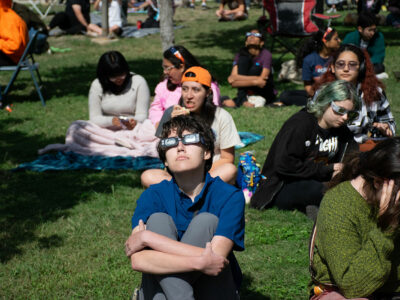As flowers begin to bloom and temperatures increase during the spring season, bees emerge from their hives. They set off into the world to forage nectar, pollen and water within a five-mile radius of their homes. Their highest peak of foraging takes place in April and May.
On Monday, April 8, a total solar eclipse will take place across North America. The moon will slowly position itself between the Earth and the sun, draping a shadow over portions of the Alamo City known as the path of totality. The UTSA Main Campus will be on the inner edge of the path of totality, where daylight will transform to a full-moon night.
Ferhat Ozturk, an assistant professor of practice in the UTSA Department of Integrative Biology, will take the celestial opportunity to discover more about bee behavior. He is leading the project with Mariah Hopkins, professor of instruction and assistant department chair in the UTSA Department of Integrative Biology.
To date, only a handful of published papers exist on the topic.
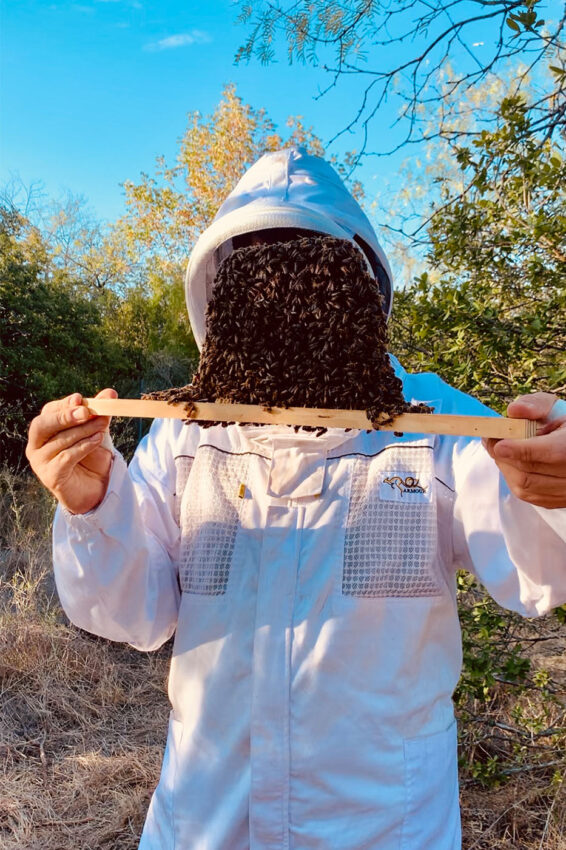
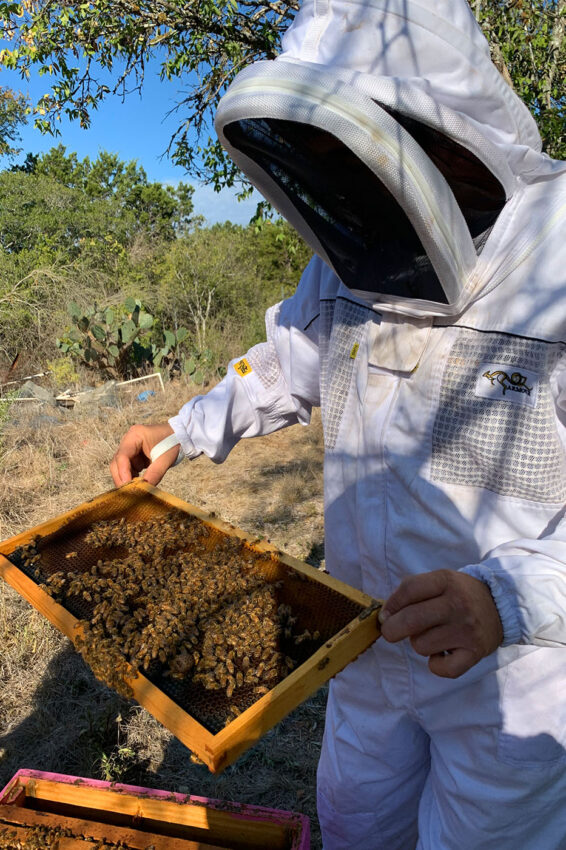
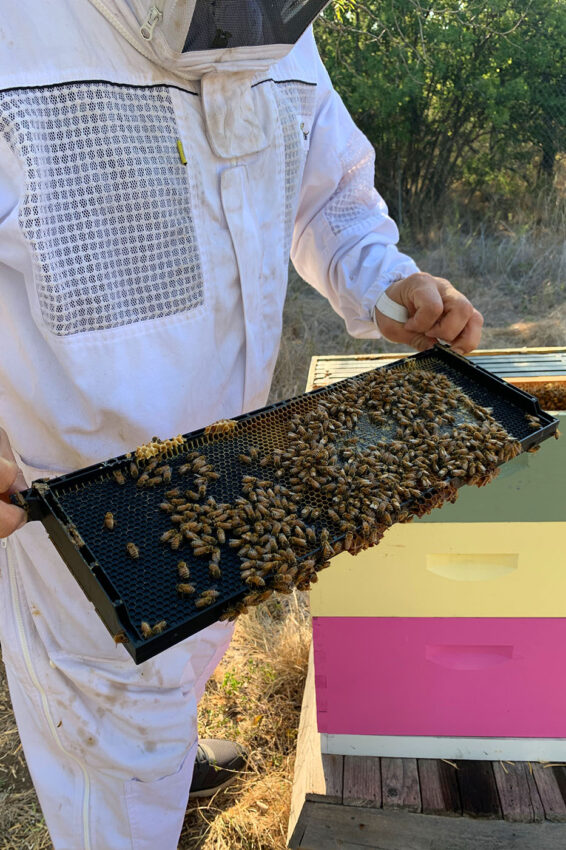
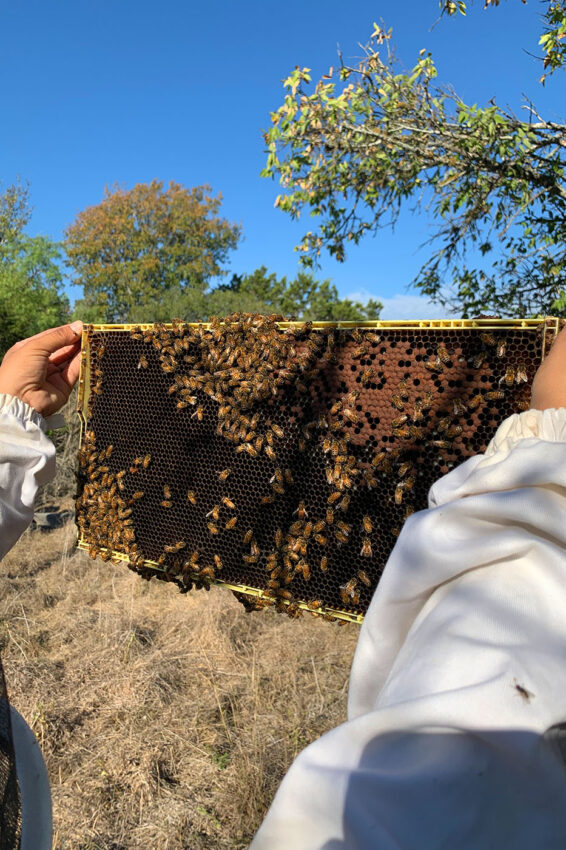
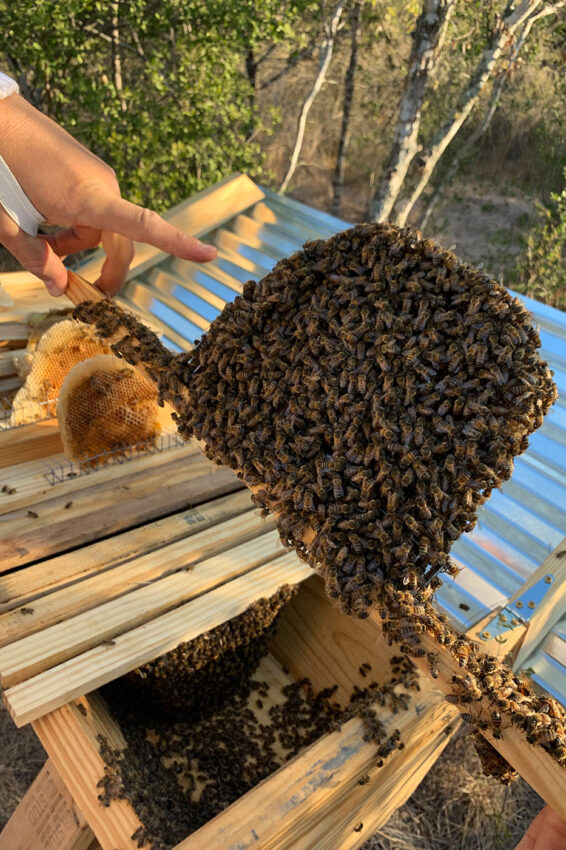
UTSA biology professor Ferhat Ozturk examines bee behavior on these hives.
“Different animals have been analyzed during eclipses, like in zoos for example, for decades. But bees are very under researched,” Ozturk says. “This will be very valuable data.”
Preceding the annular eclipse in October, Ozturk nestled recording devices into beehives to capture how bees behave during the progression of the solar eclipse. He’s continuing his study with the total solar eclipse just two weeks away.
Bees have their own circadian rhythm like we have. When the sun starts rising, bees exit from their homes to forage. As the sun sets, they return home. They find their way with the polarization the of the sunlight,” Ozturk explains.
Ozturk recently appeared on the Planet UTSA podcast to discuss bee behavior during a total solar eclipse.
Sunlight helps guide bees as they search for nectar and bring it back to their hives. Even during a cloudy day, there is still available sunlight for bees to orient themselves in the world.
“Most of them start coming back home when it gets darker. They feel the sunlight decrease. But during eclipse time if they have gone a little farther outside the five-mile radius, they’ll likely settle on a flower,” Ozturk says. “I don’t know what they are feeling, but they may feel that it’s dark and they cannot go home so it’s better to take some kind of sleep or rest on the flower. And again, when the eclipse is over, they just return to foraging.”
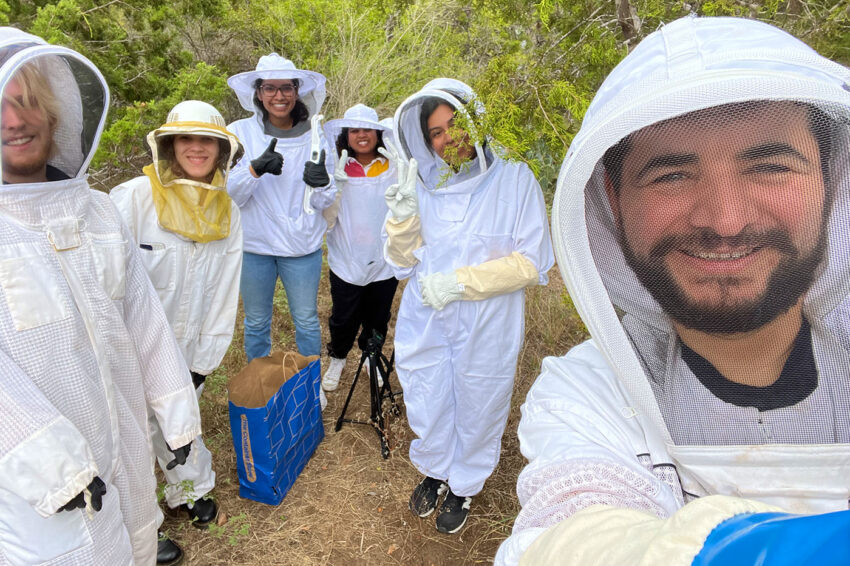
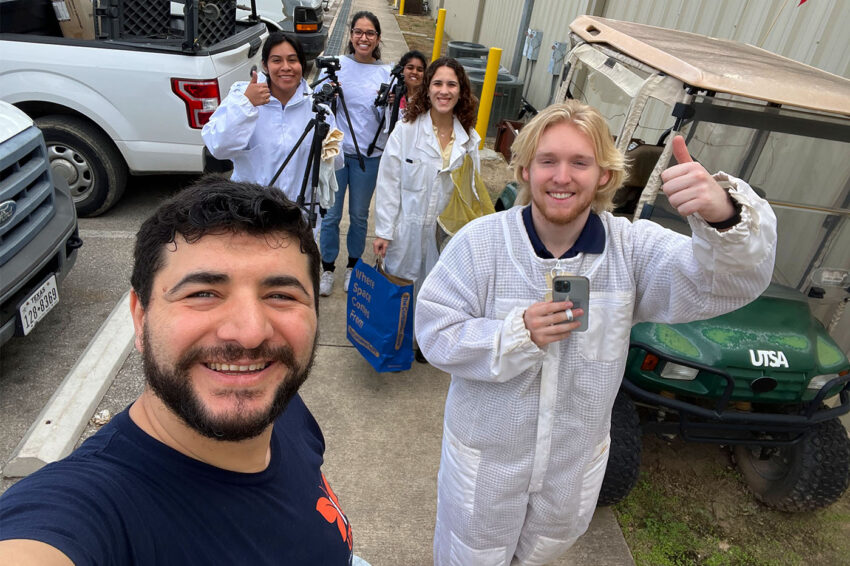
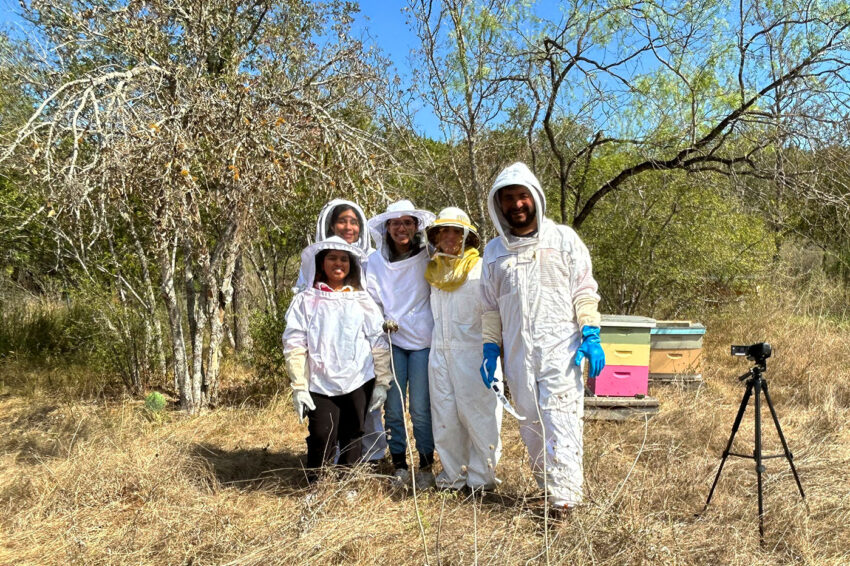
Ozturk and his students don their beekeeping gear and take a few selfies from the apiary.
Ozturk, Hopkins and a team of UTSA undergraduate students will head out to the beehives an hour before the total solar eclipse to set up acoustic and visual recording devices. The team will record how bees act before, during and after the eclipse.
“We want to see if they’re humming, if they continue their dances or if they’re crowding the entrance of the hive. We’ll also be enjoying the eclipse at the same time. We have our eclipse glasses,” Ozturk says.
